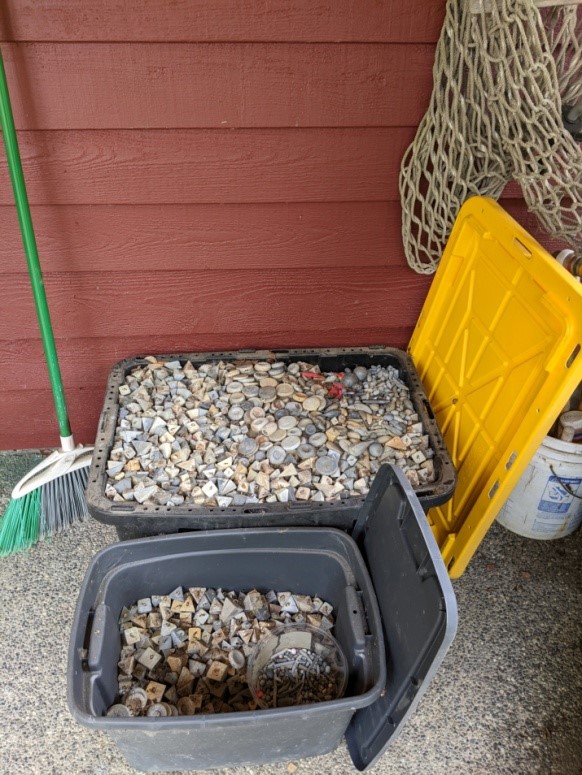
THE PROBLEM WITH LEAD FISHING WEIGHTS
By Doug Ewing, Pilchuck Audubon Society I live near the Snohomish River in Snohomish County. More than 10 years ago, I began a daily habit to pick up litter along my river. I began to notice lost fishing weights in the shallow water. These range in size from tiny, spherical, “split-shot” weights that crimp onto the angler’s line to disk and pyramidal weights of 1 to 10 oz. each. All of these are made from lead. The more I looked, the more I found. Soon, I was sporting a face mask and diving. From just one-eighth of a mile, on only one side of the river, I have removed more than 3000 lbs. of lead. This should shock you. We are throwing tons of lead every year into what is left of what is wild -our rivers and lakes- and we are doing it in every state in the US.
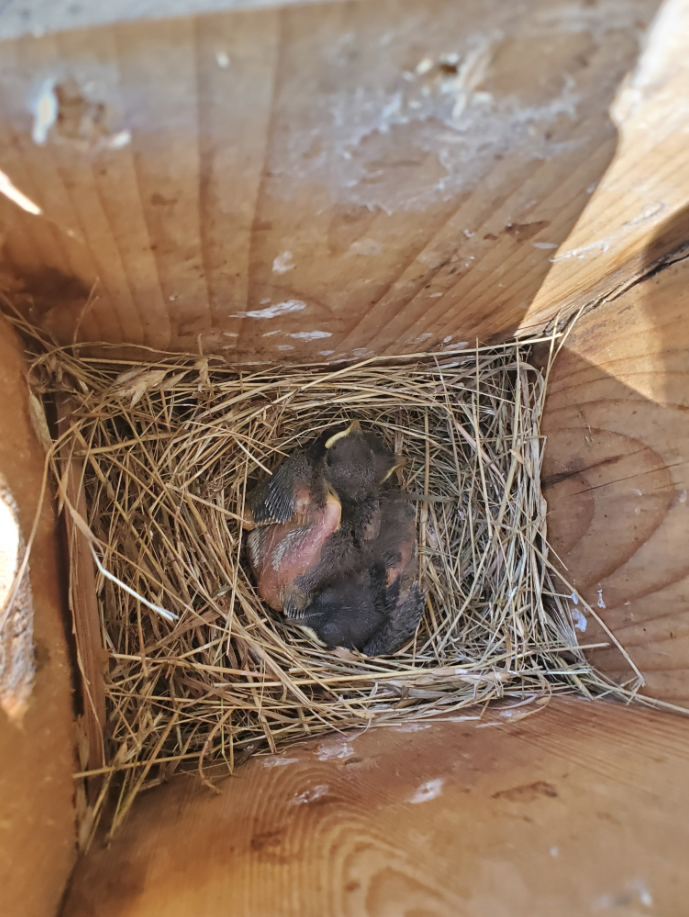
BLUEBIRD NEST BOX PROJECT UPDATE
By Kathleen Snyder I am happy to report that we have a second nesting by Western Bluebirds at the Center for Natural Land Management nursery near Tenino. The first nesting produced 4 or 5 babies. This second one has 3 or 4 babies. As you can tell, it can be hard to differentiate how many individuals there are in a pile of feathers! Our other boxes were used by Tree Swallows (5), Violet-green Swallows (1), and House Wrens (4). We did have some disappointments though. That first heat wave we had in June when the temperatures went over 90 degrees was deadly to the nestlings that hadn’t fledged. The bluebirds and two of the Tree Swallow nests had fledged but three other Tree Swallow nests suffered multiple fatalities. We are exploring options to combat this in the future. The current bluebird nest is located among the shady oak trees so
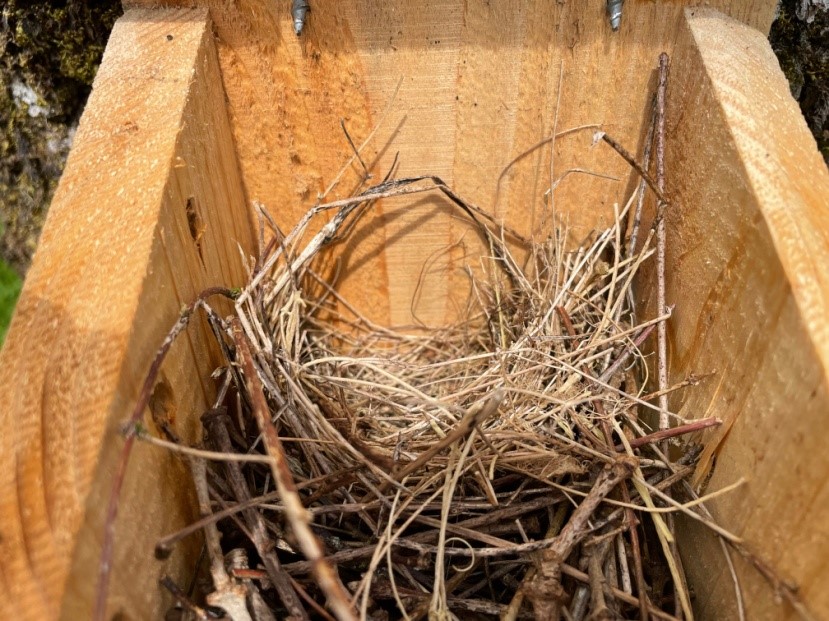
UPDATE ON BLUEBIRD NEST BOX PROJECT
Kathleen Snyder Spring this year has been challenging – wet and cold. This seems to have delayed nesting behavior in our migratory birds. As a result our project has had mixed results. We have thirteen boxes at the Center for Natural Land Management main nursery and four at their annex nursery. As of the middle of May, we have one nest box with eggs and incubating Western Bluebirds. That is a reason for celebration and we still hope to get at least one more bluebird pair using a nest box. In addition, we have three boxes being used by House Wrens and four boxes being used by Tree Swallows. Since swallows are rather erratic in their nesting behavior, that number could easily change. Our seven volunteers are doing a wonderful job monitoring the boxes and doing repairs when needed (a grazing cow knocked down one box and Fred Bergdolt rescued
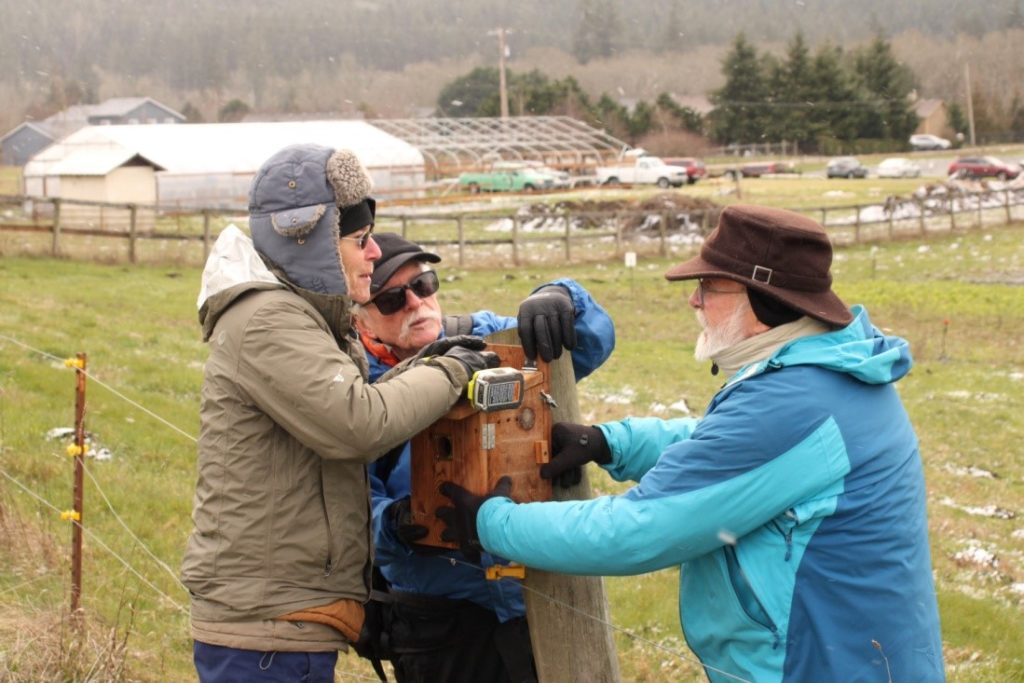
BLUEBIRD NEST BOX PROJECT
By Kathleen Snyder Things are coming together just in time; March and the arrival of Western Bluebirds are just around the corner. Beautiful new nest boxes constructed by Rinehold Groepler, Kayleigh Kueffner, and Fred Bergdolt have been installed in Violet Prairie under the leadership of Mary McCallum. The Center of Natural Land Management (CNLM) is deeply involved in prairie restoration in the South Sound region. One of their properties is next to their native seed nursery and undergoing restorative plantings. This was our prime focus for most of the new boxes that were installed. If the volunteers look cold in the photo above, that’s because they were cold. On the infamous date of 2/22/22, it was snowing as they started their work (you can see snow in the background) and, although the snow didn’t amount to much, the temperature never got out of the 30s. It was even Rinehold’s birthday

If You Build it, They Will Come – Protecting Killdeer in a Busy Place
By Jennifer DeSelle-Milam During the 2017-2018 school year, the Olympia School District unknowingly created the perfect habitat for killdeer at Pioneer Elementary School. Our new mini-building was under construction, and the rain and heavy equipment made a muddy mess of our school grounds. The district brought in loads of gravel to remedy this problem, and it didn’t take long for the Killdeer to move in. I had noticed the pair of Killdeer from my classroom window. After a few days of watching them, I became suspicious. I went outside to inspect more closely and verified that there was a female sitting on a nest. My principal and I set up some cones and caution tape to keep people from disturbing it and contacted the district. A couple of days later someone came out and set up snow fencing around the perimeter. That spring our pair of Killdeer successfully raised 2
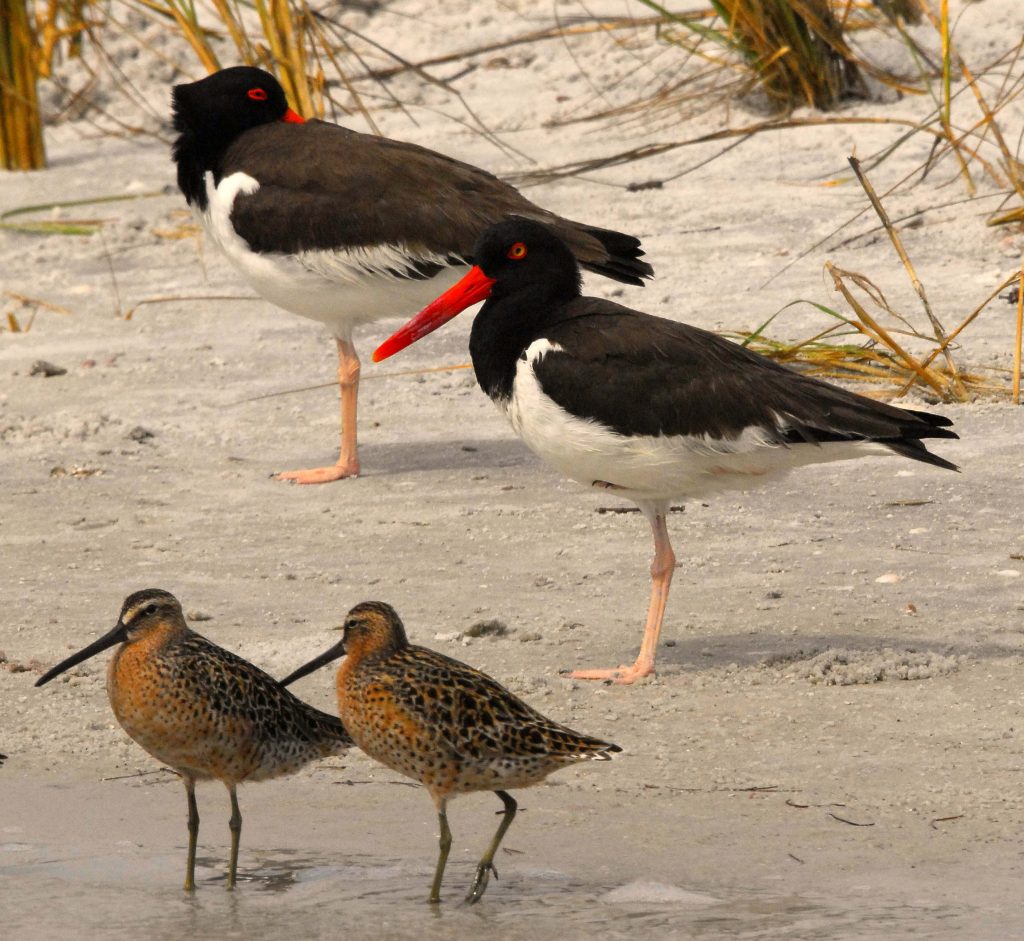
How Climate Change will Affect Shorebirds
By Kim Adelson Walking along the coast in Western Washington – along estuaries or on the beach – you can potentially spot about 70-80 species of birds. (This does not count birds you might see from shore, but who are really in nearby habitat such as in trees behind the beach, rarities, or birds you would likely have to see from a boat.) These birds are an important part of these salt-water-to-land transitional ecosystems in that they disperse the seeds of the plants that grow there (e.g. geese and ducks), they eat plant predators (e.g., Purple Martins), and they and their eggs provide food for resident animals (e.g., plovers, puffins). Unfortunately, the climate crisis is taking/will take its toll on many of these birds. In particular, National Audubon has concluded that about 50 species of coastal birds are at high risk if we do little to stem climate change and
